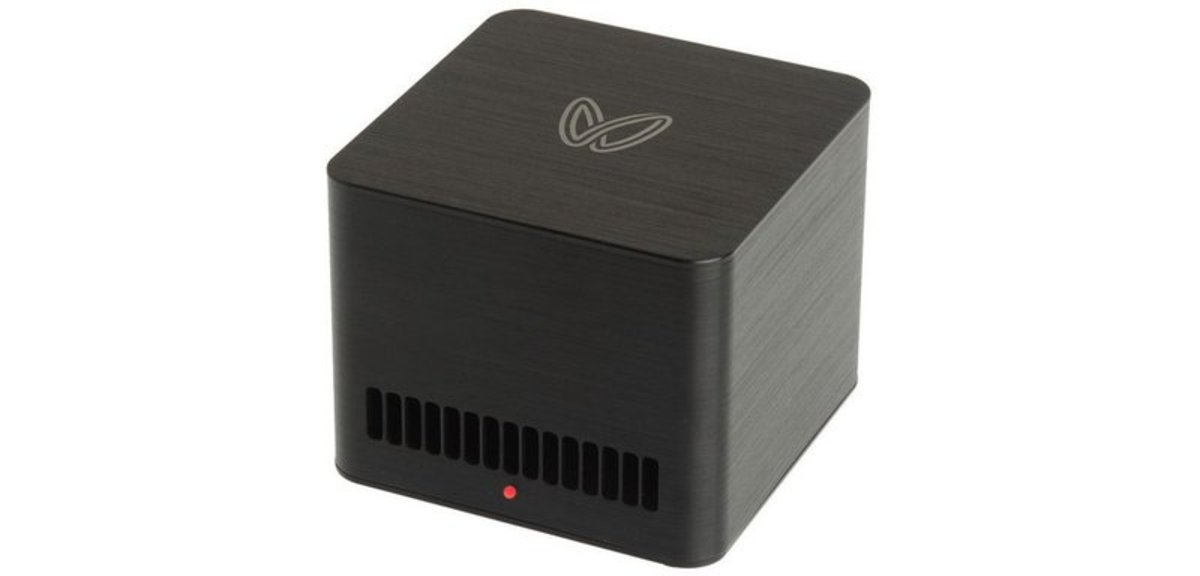
After nearly six months of delays, Butterfly Labs has finally released a copy of what appears to be the final version of one of their long-awaited ASIC mining products. Similarly to how Avalon first shipped a sample copy of their mining rig to Bitcoin developer Jeff Garzik, Butterfly Labs shipped their first unit to David Perry of Coding in My Sleep. David received the unit Saturday evening, and uploaded a video of himself unboxing and testing it the same day.
The unit in question is a Bitforce SC Jalapeno, the smallest of the four models that the company is selling, and it appears to be running flawlessly, connecting to mining pools with minimal setup and consistently cranking out 4.5-5.7 GH/s, within fifteen percent of its operating specifications. However, aside from the hash rate the statistics do not nearly live up to what the company had originally promised. The device is roughly 10x10x8 cm in size, about three times higher than the relatively flat design that had originally been conceived for the Jalapeno – the name itself coming from the idea that the machine could be used as a coffee warmer. In fact, the company has now quietly dropped the Jalapeno name from this low-end version of its product, preferring instead to use the more mundane “5 GH/s Bitcoin Miner”. However, the device is still somewhat better than those of its chief competitor: Avalon’s miner offers 65 GH/s for 620 W , or about 10.5 W per GH/s compared to Butterfly Labs’ six, and fits into the space of a desktop computer – a space into which Butterfly Labs can put 120 GH/s worth of its Jalapenos.
The device’s power consumption is 30 watts, giving an efficiency of 6 joules per gigahash (or 6 watts per GH/s; the two units are the same), six times higher than what the company originally promised. However, for those who have been following mining news, this is not surprising. When Avalon first released their miners in January, founder Yifu Guo had said in an interview: “They won’t reach the power consumption they were claiming. Recently they changed it to 1.2w, but they won’t even reach that.” Avalon’s own simulations at the time showed that even with Butterfly Labs’ superior 65-nanometer precision manufacturing process it would only be possible to reach about 3W per GH/s. At the time, many (including myself) criticized Avalon for their inferior figures with regard to both power efficiency and size, but now the truth has become clear: Avalon was simply being realistic.
In February and March, Butterfly Labs staff informed customers on their forums that they were having problems keeping to their power consumption targets, and at the beginning of April Bitcoin developer Luke Dashjr publicly confirmed that Butterfly Labs had a working ASIC, but the machine was consuming 180 W to produce only 25 GH/s. The device was not quite production-quality, and some argued that perhaps it was working so inefficiently because it was defective, but at that point it became clear to everyone that 1.2W would remain a pipe dream for many months to come. With its current efficiency of 6 W per GH/s, the “Jalapeno” remains more efficient, but far from what had been originally promised.
Thirty watts is still not a very high power expenditure; the extra 25 watts gives an expenditure of 0.6 kWh, or about $0.10 per day – a pittance compared to the $29.52 per day (that’s 5 GH/s per miner / 75000 GH/s total network hashrate * 25 BTC per block * 144 blocks per day * $123 per bitcoin) of profit that the device can currently produce. But it is nevertheless a serious inconvenience for two reasons. First of all, contrary to Butterfly Labs’ original intent, the device won’t be running off a USB anytime soon. Second, and more importantly, assuming that larger units will have a similar power to output ratio, people in apartments will have difficulty powering large numbers of Single SCs or a MiniRig (now expected to be 10 kW), meaning that those buyers will need to come up with alternative arrangements to run their machines.
Fortunately, Butterfly Labs has provided just that: in a recent FAQ update, the company wrote: “When ordering equipment from Butterfly Labs, you have the option of hosting your equipment locally with one of our affiliate data centers. Your hosted units will be added to a mining farm and you will be paid out regularly based on their collective output.” What is interesting is that Butterfly Labs and its competitor ASICMiner, taking two completely different paths, have now seen their business models converge to one and the same: Butterfly Labs, initially only selling machines, is now offering what from the buyer’s view is essentially an investment product – although they are careful to maintain that they are still actually selling hardware, giving the buyer the responsibility of configuring their device on the software side, and ASICMiner, originally literally selling shares, is now also selling machines. For those concerned about Bitcoin network centralization, Butterfly Labs’ announcement is unfortunate, as a significant fraction of the Bitcoin network will end up headquartered in one place, although the hosting location will not be administrated by Butterfly Labs themselves, and ASICMiner’s opposite announcement effectively counteracts the added centralization from this program.
So far, only the Jalapeno has been publicly released to anyone, so it still remains to be seen exactly what Butterfly Labs will do with their larger units. Josh Zerlan has said that the medium-size Singles will likely be about twice as large as the original ten-centimeter cube design and slightly wider, and stated in a public update that “obviously the minirig can’t fit 1.5 TH/s in a case the size of what we were planning, but we have some interesting solutions with regards to that,” but more specific answers are not available just yet. Fortunately, it appears that the Bitcoin mining company that we have been waiting on for so long is now in the final stages of working out these problems, so the Bitcoin mining landscape will continue to be interesting to watch for many months to come.










